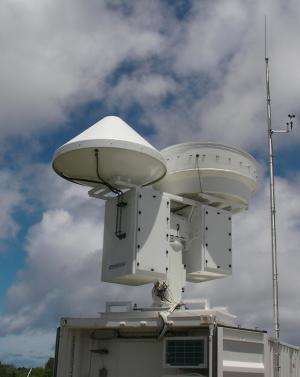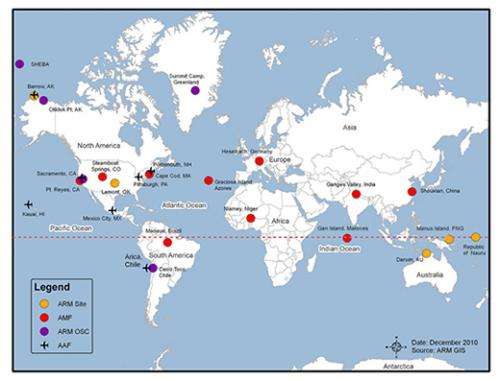ARM Climate Research Facility has amassed climate data, key accomplishments over the last two decades

Over the past 20 years, the U.S. Department of Energy (DOE) has developed a unique assembly of atmospheric measurement sites around the world known as the Atmospheric Radiation Measurement (ARM) Climate Research Facility. Dr. James Mather, technical director of the facility and scientist, along with Dr. Jimmy Voyles, the ARM Chief Operating Officer at Pacific Northwest National Laboratory, surveyed and reviewed how the facility was established and has developed to support atmospheric and climate research. Published in the journal Bulletin of the American Meteorological Society, the paper reviews historic science accomplishments ranging from the facility's impact on measuring light emitted from the sun and the earth, to understanding how clouds are made and are depicted in climate models.
How do particles in the air affect the way clouds are formed? How much sunlight reaches the Earth's surface and how much is reflected away? Are storm clouds increasing in number and intensity? The answers to these and many other questions provide a better understanding of our climate and how it may be changing. To tackle these questions, scientists need information on the fundamentals of light, cloud characteristics, precipitation and wind, just to name a few. For sound scientific results, researchers need observational data - lots of data - collected in a systematic, consistent manner. The DOE, through the ARM Climate Research Facility, has for over 20 years collected important observations about climate to support a world-wide research community. The facility, offering mobile, stationary and airborne collection operations, has attracted a large and growing research user base.

Collaborators, with decades of experience at the ARM Climate Research Facility, Mather and Voyles reviewed an extensive scientific literature that has used the facility sites and data collections. The article outlines the current research capabilities emphasizing recent developments since designated as a DOE scientific user facility in 2004. The paper also describes the new measurement capabilities and adaptations of the facility to increase effective use of these capabilities.
However, with many changes and additions to the facility over the past decade, the authors express the need to communicate the full scope of ARM capabilities to the science community so that the community can make best use of this powerful resource. This is important so that the information collected is of the greatest possible use to the research community.
The ARM Climate Research Facility continues to grow, with two new sites being developed in 2013 at Oliktok Point, Alaska, and the on Graciosa Island in the Azores. The ARM website has more information on ARM sites around the world.
More information: Mather, J. and Voyles, J. 2013. The ARM Climate Research Facility: A Review of Structure and Capabilities. Bulletin of the American Meteorological Society. DOI:10.1175/BAMS-D-11-00218.1
Journal information: Bulletin of the American Meteorological Society
Provided by Pacific Northwest National Laboratory




















